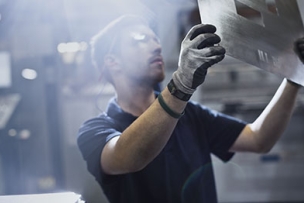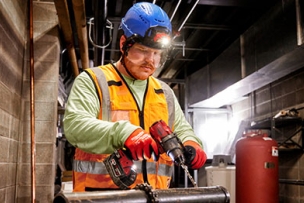The inspiration for American industry’s first safety helmets, developed more than a century ago, came from the battlefields of World War I.
Today, the latest innovations in protective headgear are being adapted not from the military but from professional sports, where a growing body of research links repetitive head injuries to potentially severe disabilities.
Concern about the long-term health of celebrity athletes, underscored in initiatives such as the NFL’s partnership to study and reduce on-field head impacts, has heightened awareness of the risks posed by traumatic brain injury in workplaces far outside American sports arenas.
At the same time, statistics are showing that a high number of such injuries occur in U.S. workplaces, prompting demand for safety helmets that provide more than the minimum protection required under federal Occupational Safety and Health Administration rules.
“Everybody has watched a football game and seen a player take a hit to the head,” explains Nora Kirby, national account manager at PIP, a safety equipment manufacturer. “Athletes have experienced serious physical challenges because of these head injuries, bringing to light that this is a topic that needs to be considered not only in the sports arena but the everyday workplace environment.”
Her company’s newest safety helmet, the Traverse, incorporates state-of-the-art features and meets not only U.S. standards for ANSI Type II hard hats but also many clauses of Europe’s EN 12492 guideline for mountain-climbing helmets as well.
“We now know that repetitive head injuries can cause long-term brain damage and early death,” Kirby says. “Advancements in understanding the impacts of these injuries translates into the marketplace and the workforce.”





Talk to Us!
Leave a reply
Your email address will not be published. Required fields are marked *